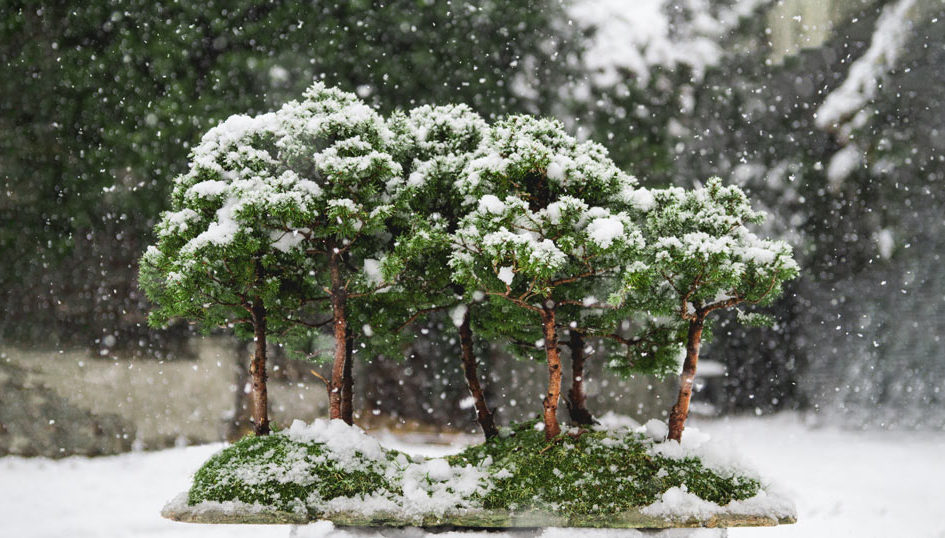In winter, the tree remains in a dormant state, and its active development is temporarily halted until spring. The dormant period is just as essential for the plant's vitality as the active growth period. Therefore, bringing bonsai indoors during winter, solely because "it might get cold," is harmful to the plant. Of course, if it is brought indoors for 1-2 days for decorative purposes, it will not cause harm. But if it stays indoors for the entire winter, eventually, it will dry out.

In temperate climate regions, where winters are not very harsh, bonsai does not require any special conditions for wintering. However, in regions where temperatures drop below -5°C in winter, it is essential to protect the plant from freezing. This is especially true for the roots. Since bonsai roots are not deeply buried in the soil, they can easily freeze. For wintering bonsai, so-called cold frames are used. A small greenhouse-like wooden or metal frame is constructed and covered with semi-transparent, white polyethylene fabric. Before placing the plant in the cold frame, water it well once, and cover it with sand or sawdust along with its container. In these conditions, the plant's roots are protected from freezing and it will not require watering for most of the winter. If a cold frame cannot be built, take a large container, place the bonsai in it, and cover it with sand so that the surface of the soil is at least 5 centimeters covered. Wintering in the ground is also possible. Dig a hole, place the bonsai container in the hole as deep as possible, and fill it with soil.
There are cases when in the spring, after the buds begin to open, the surrounding temperature suddenly drops below 0°C. At this point, newly emerged leaves and shoots often freeze and wither. Therefore, always be cautious, and in such cases either wrap the plant or move it to a place where it is not threatened by frost.

